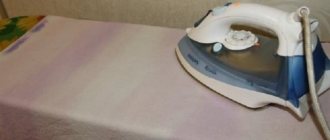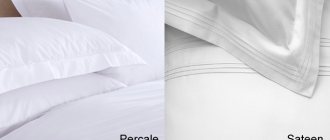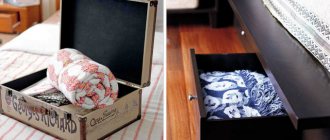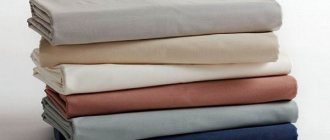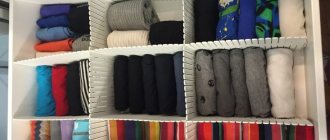Washing is a process in which every housewife can easily have her own secrets. And although the new generation of washing machines sometimes seems to perform outright cosmic functions, every second housewife does a lot of things with her own hands. For example, soaking laundry - sometimes there’s no escape from this pre-washing action.
Some people use grandma's secrets, others soak their laundry by trial and error. But how to do this correctly? This process can be described in four simple tips.
Tip one: why soaking is so important
Soaking simplifies the washing process. This is an axiom. What is the essence of washing, think about it. You go to your unit, let it be, for example, a Samsung washing machine, and throw your laundry in there. The dirt from the laundry should go into the water, partly into the detergent, and this dirty water will go down the drain. But if you soak, a significant part of the dirt will go into this first water. And the laundry will go into the washing machine, to some extent, clean, and it will be easier for it to be washed further.
There are some important nuances here:
- Be sure to sort things, both by color and type of fabric, and by degree of soiling;
- Do not wash knitwear with wool;
- Do not wash dyed cotton and linen with undyed cotton and linen;
- Do not wash synthetics with natural fabrics.
Sometimes it’s worth soaking things after washing. But more on that later.
Selecting a remedy
Using products containing enzymes improves the soaking effect. These substances enhance the breakdown of dirt molecules and push them out of the fabric fibers. Available products also help in removing stains.
Aspirin
Acetylsalicylic acid will prevent white items from becoming yellow and gray, which appears after frequent washing. Add 4-5 crushed acetylsalicylic acid tablets to the basin where the laundry will be soaked.
Use this method for white items. T-shirts, terry towels and bed linen are soaked once a month for 20 minutes to preserve color.
Soaking laundry with salt is a universal way to remove dirt from fabric. Works well on thin synthetic materials. Veil, tulle and organza must be soaked in saline solution before washing. Using salt, remove dirt and protect the fabric from stubborn stains.
Dissolve 2 tablespoons of salt in 5 liters of warm water and place the laundry in the mixture for 15 minutes. Next, the fabric is rinsed and sent to the wash.
Helps remove yellowness and disinfects things. Suitable for natural light fabrics. May leave white streaks on black and colored materials.
Mix 6 liters of water and 0.5 cups of soda in a basin. Stir the mixture thoroughly until the powder is completely dissolved. Immerse the laundry in the basin and leave for 20-30 minutes. Then wash as usual.
Vinegar
Used to remove difficult stains from fruit and wine, prevents dyes from washing out. Items soaked in vinegar solution will retain their bright color even after many washes. Used for natural fabrics.
Add 1 glass of 9% vinegar to 10 liters of water and soak the clothes for 20 minutes. This procedure removes yellow stains from sweat and deodorant well.
Hydrogen peroxide
Removes protein-based contaminants. With its help, traces of blood, sweat and urine are removed. The stain is moistened with peroxide, left until it stops foaming and rinsed.
When bleaching, add 1 tablespoon of the product per 6 liters of water. Soaking duration is 30 minutes. Peroxide is not used on colored or black fabrics. It leaves light spots on the paint.
Mustard
An indispensable product for washing kitchen towels. Suitable for both white and colored linen. Dissolve 1 tablespoon of dry product in 5 liters of water and soak the towels for 30 minutes. The dirty water is drained and the laundry is transferred to a new solution. The procedure is repeated 2-3 times.
Potassium permangantsovka
Used to restore snow-white color, it is an optical brightener. Several crystals are thoroughly stirred in water. The solution should turn out to be a soft pink color. The laundry is soaked in the composition for 15 minutes, then wrung out and put in the washing machine.
Copper sulfate
A product that removes mold and mildew. The drug is toxic and can cause poisoning, so be sure to use gloves when working with it.
One tablespoon of powder is dissolved in 10 liters of warm water and soaked in the laundry for 10 minutes. Things are thoroughly rinsed 3-4 times and put in the washing machine.
Ammonia
It is mixed with glycerin in equal proportions to remove old stains. Apply the resulting composition to the contamination. After 15 minutes, the item treated with ammonia is soaked in a warm soapy solution.
Vegetable oil
Used to remove multiple stains of unknown origin. To do this, dissolve 0.5 cups of washing powder, 1 tbsp. in 5 liters of water. l. bleach and 3 tbsp. l. refined oil.
The resulting composition is thoroughly stirred, the laundry is immersed in it and brought to a boil and waited for 15 minutes, then the fire is turned off and left until it cools completely. Afterwards they are rinsed and put into the washing machine. Can only be used on cotton and linen.
Tip two: what to soak things in
Be sure to prepare the soaking solution in advance. You can, of course, “plop” the finished product from a bottle into water, but this is not entirely correct.
You can simply dissolve a little detergent in water and throw things into this concentrated mixture. Sometimes they are soaked in water containing detergents, where the laundry will subsequently be washed.
If the solution is warm, then you need to soak things in it for at least three hours. By warm we mean a solution of 30 degrees.
If the solution is cold, it will take longer to soak.
It’s worth mentioning separately about laundry soap. Yes, progress is progress, and this cheap remedy never ceases to prove its worth. So, let's say you've soaped things up, quite heavily. You can soak them in warm water, where in addition to the soapy solution from things, there will also be a tablespoon of soda. The time of such soaking is 8-10 hours.
LiveInternetLiveInternet
—Categories
- knitting-Irish lace (259)
- patterns, elements, motifs of Irish lace. (64)
- animations (3)
- aromatherapy (8)
- biographies of historical figures (15)
- life of interesting people (12)
- beading (268)
- great and mighty - Russian language (66)
- virtual travel (50)
- stained glass (21)
- embroidery (4673)
- bargello (19)
- blackwork (28)
- bead embroidery (8)
- embroidery using Holbein technique (2)
- satin stitch embroidery (8)
- embroidery on plastic canvas (1)
- tapestry embroidery (1)
- loop lace, needle lace (2)
- tips on embroidery techniques (64)
- hardanger (10)
- knitting - Japanese knitting technique (3)
- knitting using freeform technique (15)
- knitting for home (471)
- crochet (3333)
- knitting - Romanian lace (7)
- beading (4)
- ribbon lace (8)
- crochet motifs and border (638)
- Tunisian knitting (44)
- crochet lessons (778)
- fillet knitting (48)
- SHAWLS (21)
- scarves, hats (21)
- fur knitting (18)
- knitting on a fork (19)
- knitting (2034)
- jacquard (80)
- Knitting lessons, knitting patterns (726)
- hats, scarves, shawls (81)
- knitted toys (238)
- knitted bags (0)
- fortune telling (30)
- decoupage (126)
- household chores (272)
- making the body (295)
- for the soul (8)
- for women (2)
- home video (195)
- Pets (23)
- home magic (103)
- spiritual practices (38)
- women's troubles (5)
- Painting, illustrations (69)
- Housing and communal services - news (14)
- craft magazines (83)
- Ask a question and get an answer (1)
- taboo topics in history (82)
- sounds of nature (17)
- health (1202)
- therapeutic exercises (224)
- traditional medicine, herbal medicine (131)
- reflexology, massage (184)
- games (30)
- interesting (193)
- interior (90)
- healing mantras (34)
- music for relaxation (27)
- yoga (53)
- calendar (1)
- calligraphy (1)
- calculator (1)
- quilling (136)
- books (59)
- indoor flowers and care for them (63)
- computer hints (107)
- canning (297)
- cosmetics (513)
- beauty and health (166)
- cooking (1878)
- fish dishes (6)
- baked goods (824)
- baking yeast-free bread (12)
- desserts (46)
- meat dishes (89)
- vegetable dishes (25)
- useful for the kitchen (86)
- seasonings (8)
- sauces (39)
- salt dough modeling (55)
- lunar calendar (1)
- mandalas (24)
- the world around us (1)
- prayer (15)
- mudras (15)
- music (121)
- soap making (27)
- thoughts wise and not so wise (63)
- non-woven tapestry (10)
- alternative medicine (103)
- New Year's (268)
- nuking (1)
- numerology (34)
- amulets (1)
- first aid (2)
- knitting website translator (4)
- weaving from newspapers or wicker (117)
- useful and necessary (26)
- Orthodox dates (1)
- omens (12)
- natural medicines (152)
- forecasts for the future (6)
- psychology (165)
- patchwork (1)
- troubleshooting (2)
- work on yourself (9)
- radio play, audiobooks (562)
- miscellaneous (5)
- Various useful things (7)
- wood carving (9)
- repair (71)
- microwave recipes (38)
- drawing (134)
- digital graphics (1)
- Russia, events in the country, politics (216)
- politics in the world (14)
- handicrafts (814)
- (2)
- handicraft master classes (20)
- MACRAME (14)
- parchment (1)
- working with paper - scrapbooking, origami, boxes, packaging (44)
- leather work (3)
- furniture restoration (48)
- DIY jewelry (14)
- cold porcelain, polymer clay (34)
- boxes (4)
- runes (97)
- runes (1)
- properties of stones (5)
- Secrets of life (28)
- simoron (40)
- bedtime story (1)
- links to necessary sites (37)
- stereo pictures (11)
- poems (38)
- talismans amulets (15)
- theater on screen (65)
- temari-japanese embroidery (27)
- technologies, secrets, recipes (1)
- spot painting (139)
- stencils, templates (292)
- memory training (12)
- brain problems (2)
- Ukraine (165)
- English lessons (4)
- Italian lessons (2)
- photos (78)
- take pictures correctly (4)
- Photoshop (1)
- freeform (1)
- palmistry (3)
- I want to visit and see. (32)
- Qigong (12)
- sewing (502)
- fashion magazines (9)
- fur products (2)
- sewing technology, sewing accessories, useful (44)
- sew soft toys (33)
- esoterics (54)
- encyclopedia, information about countries of the world (1)
- humor in pictures (61)
- Legal advice (15)
Tip three: how to soak heavily soiled items
For example, workwear with oil stains. And in general, men’s clothes, soiled to some extreme degree, women often have to wash.
Follow these instructions:
- Dilute 2-3 tablespoons of soda ash or trinitriphosphate in ten liters of water;
- Such clothes need to be soaked for at least 12 hours, and preferably a day;
- Soaking temperature – 30-40 degrees;
- But do not soak woolen items for more than ten minutes, no matter how dirty they are;
- You should never wash things made of lavsan and (or) nitron with soap.
If the contaminants are of a protein nature, for example, berries, sauces, eggs, blood, the soaking products must contain enzymes.
And now about how and why to soak laundry after washing.
For example, you washed, ironed, and the mark from the hot iron appeared so offensively on the item. Or the situation is simpler - the product simply fell off after washing. What to do? You'll have to soak it.
The solution for soaking after washing is as follows:
1 tablespoon of turpentine;
3 tablespoons of ammonia;
2 tablespoons of vodka;
10 liters of water.
This is the so-called grandmother's recipe, which rarely fails.
Step-by-step instruction
You will need a large basin or tank. The container should be spacious so that the laundry does not lie tightly in it. Otherwise there will be no effect.
Items are sorted by color, type of fabric, degree of soiling. The basin is filled with water at a temperature of 40 degrees, to which a suitable agent is added. Use half as much powder or gel as for the main cycle.
Stir the soap composition thoroughly so that no flakes, solid particles of soap or powder remain. The sorted items are immersed in the resulting solution.
If we are talking about delicate fabrics, then it is better to leave the temperature as written on the label and not exceed it.
Keep the laundry in the soap solution for no more than 30 minutes. If the water is very dirty, replace it with clean water and continue for another 0.5 hour. This method of soaking is much more effective than one procedure lasting 1 hour. Within 60 minutes, dirt molecules first dissolve in water and then evenly penetrate back into the fabric fibers. The item turns gray and will be difficult to wash.
Thin, delicate, synthetic materials are soaked for 15-20 minutes. This is enough to remove contaminants. If there are stains on things, they are first washed with a suitable stain remover.
Tip four: how to soak whites
Be sure to take these tips into account:
- You can soak white items in cold water, or in warm water, but again, no higher than thirty to forty degrees. While soaking, you can add a little washing powder to the water.
- And if you are soaking kitchen towels, add salt to the water, just a little bit.
- White items should not be soaked for more than an hour.
- The best time for soaking is half an hour.
- After soaking, thoroughly rub the areas on white items with soap again, and only then put them in the washing machine.
Well, that's all the tricks. The correct mode of subsequent washing is important: be it a Beko washing machine, or more modest equipment.
Successful washing with the cleanest result!
Household chemicals
Chlorine-containing products such as Belizna, Domestos and their analogues remove mold and stubborn stains and combat yellowness and grayness of the material. They are used for white natural materials according to the instructions on the packaging. Synthetics and colored fabrics should not be soaked with chlorine.
Vanish is used for soaking colored items. Approximately 30 grams of powder is dissolved in 10 liters of warm water and the clothes are left for 1 hour. Next, wash and rinse. The stain remover delicately removes dirt of various origins without damaging the fabric fibers.
For Sasha, the article appeared just in time. His jeans and bedding definitely needed to be soaked in some of the extras before washing. And in the following articles in this series, you will learn how to properly wash clothes in a machine and by hand, what to do with different types of fabrics and other useful tips.
Like and subscribe to the
KhozVopros channel. This will help us publish more interesting articles.
Secrets of proper soaking of laundry
Secrets of proper soaking of laundry
Soaking is part of the washing process, which directly affects how clean your laundry will be. And the secrets of proper soaking will help you cope with even the most complex and large laundry.
So how to soak laundry correctly?
• Before soaking, items are sorted by type of fabric and degree of soiling. Separately put aside cotton and linen underwear, dyed cotton and linen underwear, woven products made from chemical fibers, items made from wool and natural silk, and synthetic knitted products.
• You can soak laundry in wooden, galvanized and enamel dishes.
• When soaking, the water should completely cover the items . If the amount is insufficient, dirt accumulates in certain areas of the tissue and is subsequently washed off with great difficulty.
items with water-soluble contaminants (for example, dust ) under running water before soaking.
• You should use half as much washing powder for soaking as for washing. The duration of soaking should be at least 2 hours at a solution temperature of at least 30°C
• If you have to wash rough items made of cotton and linen fabrics , oily overalls, very dirty linen, then use highly alkaline products for soaking, such as “Soda ash”, “Trisodium phosphate: 2-3 tbsp. spoons of the drug per 10 liters of water. The duration of soaking such things is from 12 to 24 hours at 30-40°C.
• For soaking, you can use washing powders and pastes with biological additives (enzymes) that help remove protein contaminants. Linen should be soaked in such products at a water temperature no higher than 35-40°C, and washed at up to 60°C, since at higher temperatures the enzymes die.
• White and colored laundry are soaked separately.
• in warm water (40° C) for 3 hours, in cool water - a little longer. Items that require boiling are recommended to be soaked for at least 12 hours. Products made from colored fabrics should be kept in water for about 1 hour.
• White linen that can withstand boiling well is soaked in cold or warm (but not hot) water for a relatively long time, for example overnight.
• When soaking white linen in water, it is good to add turpentine , three tablespoons per bucket of water. This simple product helps whiten clothes and makes washing easier.
• Linen that was starched in the last wash is recommended to be soaked in warm water. The starch will dissolve faster and more completely in it, and the laundry will not turn yellow.
• colored laundry only for 2-3 hours and only in cold water. Colored items should be soaked (and washed) in as much water as possible so that they are not pressed against each other. Items that may fade should not be soaked and washed separately.
• To determine whether an item is shedding , take a piece of the fabric from which it is made, soak it in warm soapy water, wrap it in a white rag and wring it out. If there are no marks left on the rag, then the material does not fade. Colored products with fragile colors and combined ones do not need to be soaked at all.
• Items made from colored fabrics of different colors are not recommended to be soaked in the same water.
• Items made from thin cotton fabrics should be soaked separately from other items. The temperature of the water for soaking should not exceed 40° C. Otherwise, contaminants, especially those of protein origin (cream, eggs, blood), undergo coagulation. Such stains are very difficult to remove.
• items made of wool and colored knitwear only in cool water without adding detergents.
• Products made of wool and natural silk , as well as dyed fabrics, should not be soaked for a long time.
• To ensure that the laundry gets thoroughly wet , it should not be packed tightly when soaking. It is recommended to stir the laundry from time to time; you can wrinkle or rub it.
• If the laundry is very dirty , then change the soaking water several times. If you need to wash very washed cotton linen, soak it for a day in a solution containing 2-3 tablespoons of detergent for cotton fabrics and the same amount of turpentine per 10 liters of water. There is another way: you can soak things in a warm (30-40°C) vinegar solution (1 teaspoon per 1 liter of water).
• Excessively long (more than a day) soaking is not only impractical, but also harmful , since the laundry turns sour and acquires a foul odor, which is difficult to remove even with subsequent washing and thorough rinsing.
• Soaking is also necessary for things contaminated with protein and starchy substances - blood, pus, milk, eggs, etc.
• For heavily soiled laundry, do two soaks : the first (for 2-4 hours) is done in plain water, softened with a small amount of soda. For the second soaking, you can use detergents or prepare a soap-soda solution: for 1 kilogram of laundry, take 10 liters of water, 5-8 grams of soda and 3-5 grams of 40% soap. First, dissolve soda in a small amount of hot water and pour it into a container for soaking, and after 15-20 minutes a separately prepared soap solution is added to the water, then put in the laundry, well wrung out after the first soaking. Instead of soda, you can use trisodium phosphate, washing powder or ammonia.
Some interesting tips:
Cold wash clothes. Scrape 400 g of soap with a knife, pour it into 30 liters of boiling water, adding 2 tablespoons of turpentine and 2 tablespoons of ammonia, beat the foam, lower the laundry, close and leave for 10 hours, then rinse thoroughly. This method is only suitable for linen and can only be used occasionally.
Washing clothes without hand washing. This is one of the least labor-intensive methods. The linen is soaked in water with the addition of soda (2 tablespoons of soda for 1 bucket of water), after washing the sleeves, collars and other most contaminated areas. After 5-6 hours, the laundry is wrung out and placed in a tank, into which the following composition has previously been poured: for 1 bucket of water - 100 g of soap, 30 g of soda, 50-75 g of turpentine. The laundry is boiled in this solution for 1-1.5 hours, and then rinsed first in warm and then in cold water.
Handwash. There are no changes during hand washing. Delicate items are washed by hand, without using a washboard or brush. Thicker, more durable and heavily soiled items can be washed with a brush.
Cotton lace , tulle, lace fabrics are soaked for an hour and a half in cold salted water before washing and only then washed in warm water, adding some powder with chemical bleach. They cannot be rubbed or twisted, but only very lightly squeezed. Then the lace is rinsed in plenty of warm water and lightly starched.
Is the usual tradition still relevant?
Following the correct principles of soaking laundry will not only improve the quality of washing, but also prevent harm to the fabrics. It is important to approach this task wisely: use the appropriate temperature and use the appropriate detergents.
What are the benefits of soaking?
Rest assured: soaking the laundry will greatly simplify the further washing process . The main part of the contaminants at this stage is dissolved under the influence of water and detergents.
IMPORTANT! The dirt remains in the soap solution, and relatively clean laundry is sent to the washing machine, which becomes much easier to wash.
If home textiles have minor stains, there is no need to soak them; the machine can handle them on its own. But stubborn stains will be much more difficult to remove, and machine washing alone will not do. Heavily soiled textiles need to be kept in water first, so washing will be faster and more efficient .
Opinion against: useless and harmful!
There is another opinion. Some women are convinced that this process has become useless these days. And there is no point in wasting time on it.
Let's not convince them. Let us only draw attention to the fact that you should avoid keeping any materials in water for too long.
IMPORTANT! Soaking textiles for more than a day is not only pointless, but also harmful! Things turn sour and acquire an unpleasant odor, which is not easy to get rid of even with subsequent washing.
You should not keep items made of natural silk and wool in water (the fibers of such fabrics may be damaged).
Cases when a washing machine will not work
There are certain categories of items that can only be washed by hand. Otherwise, they can easily be damaged or other clothes become unusable. Such products include:
- Underwear;
- Cashmere;
- Silk (shawls, scarves, etc.);
- Shedding fabrics;
- Lace;
- Wool;
- Etc.
Children's clothes are also often washed by hand. But this is not critical - the main thing here is to use special powders. In addition, you can wash your most favorite things by hand, which you would hate to spoil, and you want to extend their “life” as much as possible.


